Those of you who are not familiar with the Yugoslav Wars in the 1990s might not have heard about Vukovar, Croatia. But this town, located on the border between Croatia and Serbia, has been a scene of one of the biggest and most cruel war crimes in the current European history.
Even if today the life in Vukovar goes by normally and a big part of the city was rebuilt and renovated, the remnants of the tragic past are visible on every step, including the destroyed water tower – the symbol of the suffering city.

I’m very much interested in the Balkans and its history and I knew I have to visit Vukovar whenever I have a chance. Balkans are more than all the highlights and beautiful places, the region is so complex and full of history and it’s worth visiting also less-known yet important places to fully understand it.
When I planned my Balkan itinerary last summer I figured Vukovar is an easy stop between Novi Sad (Serbia) and Zagreb (Croatia) and I didn’t think twice, I used this opportunity to travel to Vukovar. Now I think this was one of the most important places for me to visit in the Balkans.
Vukovar essentials
- Where to stay in Vukovar: Pansion Vila Vanda (9.5/10) / Vila Rosa (9.8/10)
- Best day trip from Zagreb to Vukovar: Croatian war story: hero city of Vukovar – full day tour from Zagreb
- Get insured for your trip to Croatia with SafetyWing
Where is Vukovar, Croatia
Vukovar, a town of around 27 thousand inhabitants, is located in the north-east part of Croatia, at the border with Serbia across the Danube river. Osijek, the fourth largest city in Croatia, is 35 km away, while Zagreb, the capital of Croatia, is around 300 km away. Another nearby large city is Novi Sad in Serbia, which is 80 km away from Vukovar.
Click here to see the exact location of Vukovar on the map.
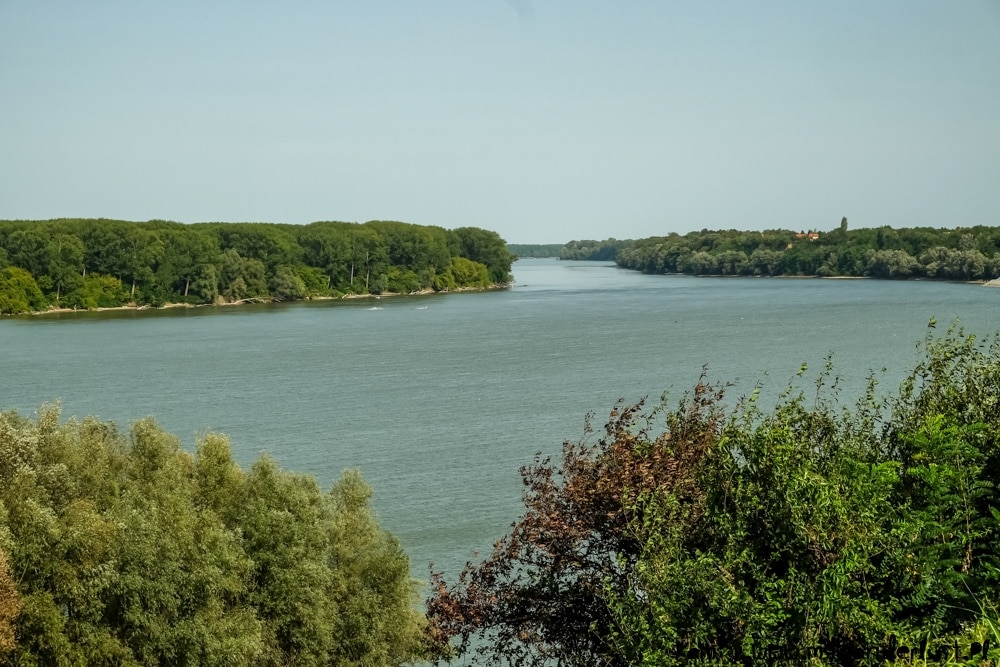
A brief history of Vukovar
Vukovar was first mentioned in the early 13th century and thanks to its location on the Danube river, it quickly grew to be an important place in the area and one of the main harbors on the Danube.
Over the centuries Vukovar was part of the Kingdom of Hungary, Ottoman Empire, Habsburg Monarchy, Kingdom of Serbs, Croats, and Slovenes, Yugoslavia, and eventually independent Croatia.
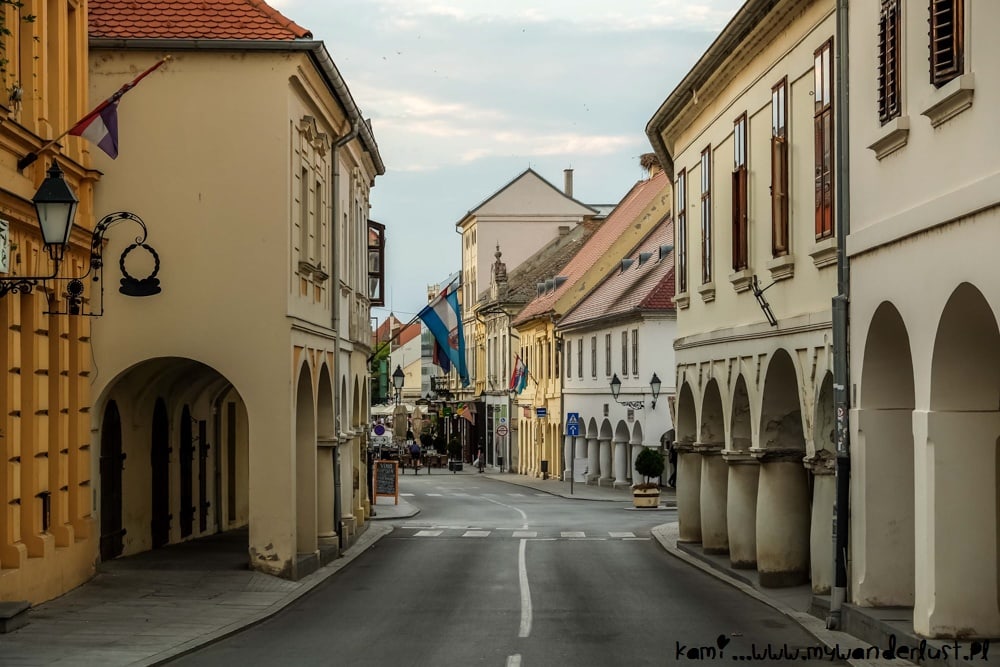
The whole world learned about the city in 1991 when the siege of Vukovar took place. Before the Yugoslav Wars, the city was inhabited by around 45 thousand people, 30% of which were Serbs. In the spring of 1991, there were first incidents, homes and shops of both sides were attacked and the Serbian Army surrounded Vukovar but the real siege started in August.
The city was defended by less than two thousand soldiers, while the Yugoslav Army (de facto the Serb one) had between 27 and 80 thousand soldiers attacking. The siege took 87 days until Vukovar was captured by the Yugoslav Army and proclaimed the Serb city.
Around eight thousand people (mostly civilians) died during the fights, afterward during the Ethnic cleansing the majority of the Croatian inhabitants were either murdered or driven out of town. 99% of the city was destroyed, making Vukovar the first place in Europe so heavily damaged since World War Two. You can see how the city looked like during the battle here.
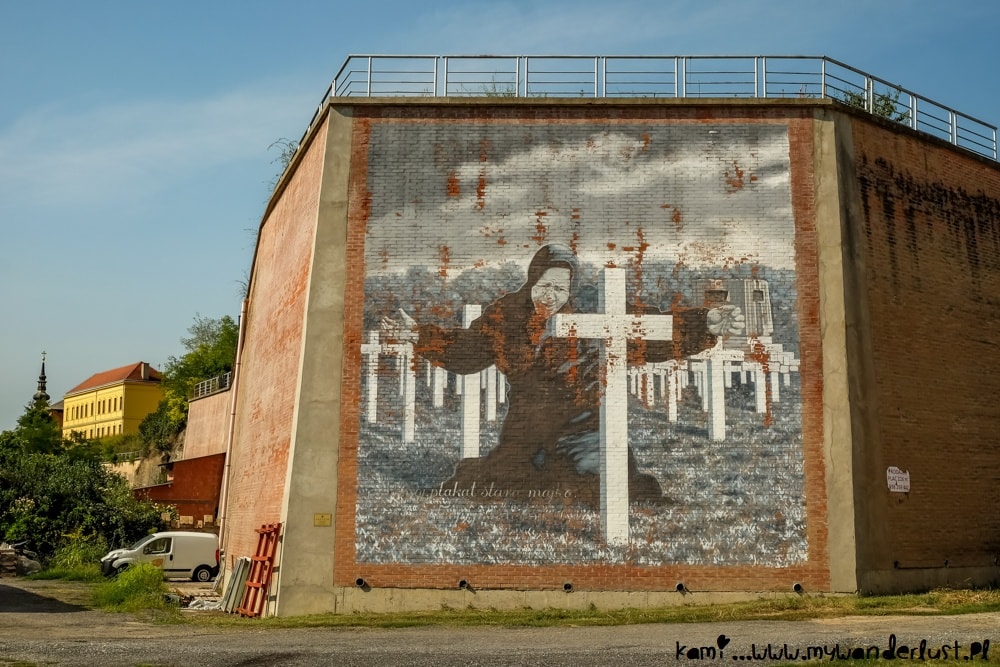
The most barbarian part of the siege was when the local hospital, clearly marked with the red cross, was attacked and captured. During the siege, the building was strafed over 800 times until it was eventually captured in November 1991.
Many of those who were wounded were killed directly in their hospital beds, others (255 non-Serbian workers and patients) were taken to the nearby village Ovcara where they were tortured and eventually killed and buried in the mass grave. Only one man managed to escape, his testimony helped to recognize this war crime.

The battle of Vukovar was the turning point in the Croatian war of independence, however, the city was under Serbian rule until 1998 when it was peacefully incorporated into Croatia.
Today Vukovar is the symbol of the resistance and the Croatian heroic-city. One of the main streets in Zagreb, the capital, is named after the city of Vukovar.

How to get to Vukovar
Getting to Vukovar is actually rather easy, no matter if you arrive from Croatia or Serbia (like I did).
There are a few bus connections per day from Zagreb, the journey should take around 5 hours. When I went to Vukovar there were two daily buses from Novi Sad, the journey took around 2 hours, including the border crossing. Nearby Osijek is also well connected with Vukovar.
The bus station is located in the center of Vukovar.
There are also train connections from Zagreb to Vukovar, with a change in Vinkovci (half an hour away from Vukovar). The fastest connection takes a bit over 4 hours.
I was planning to take the train to Zagreb but on that day it was raining cats and dogs. The train station is located a bit away from the center (near the hospital) and when I arrived there well before the train’s departure it turned out there is no real train station building to wait in, the old one was still destroyed after the war. I didn’t want to wait in the heavy rain so went to the bus station to catch the bus instead.

Things to do in Vukovar
While I went to the city mostly for its recent history, there are actually a few Vukovar attractions that make the place worth visiting.
The biggest one is Eltz Manor – the 18th-century Baroque palace that you might know from the 20 kuna banknote. During the 1991 Battle of Vukovar, the building was greatly damaged but now it’s restored to its former beauty.
The manor is located a short walk away from the center and today this is home to Vukovar City Museum. It’s worth seeing the extended exhibition of the city’s history as the museum is often among the most interesting city museums in Europe.


The center of Vukovar is small but very pleasant. When crossing the Jean-Michel Nicolier Bridge from the Eltz Manor to the central part of Vukovar take a look at the signs on the ground – that’s the natural border between two regions in the Balkans – Slavonia and Syrmia.
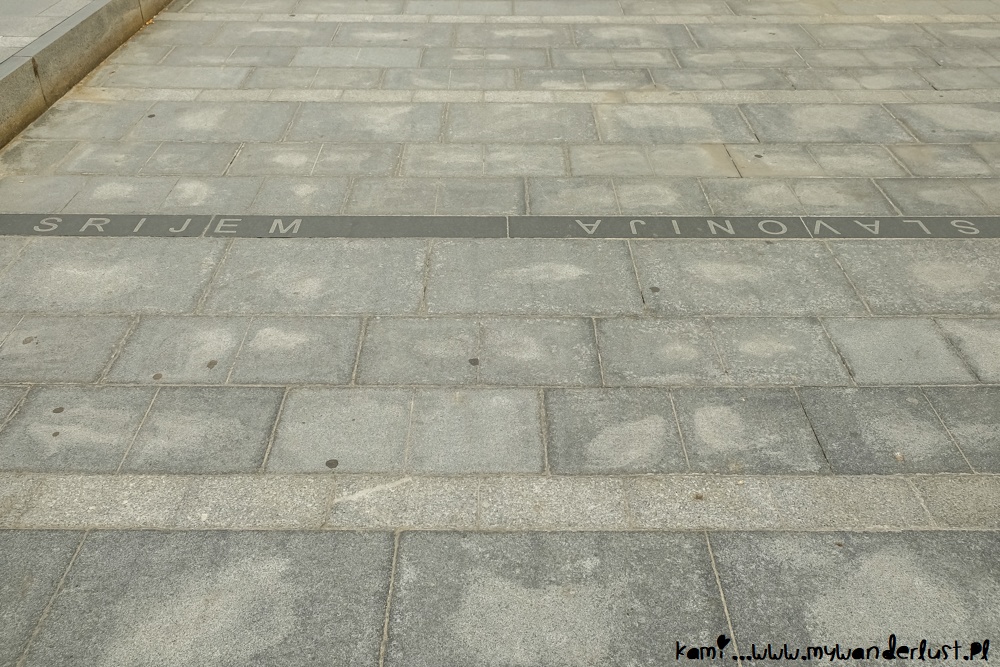
Although many of the buildings are still covered in the bulletholes, reminding of the tragic past, life is going on normally here. Locals wander around the pedestrian streets, sit in one of the cafes, or enjoy the riverside.
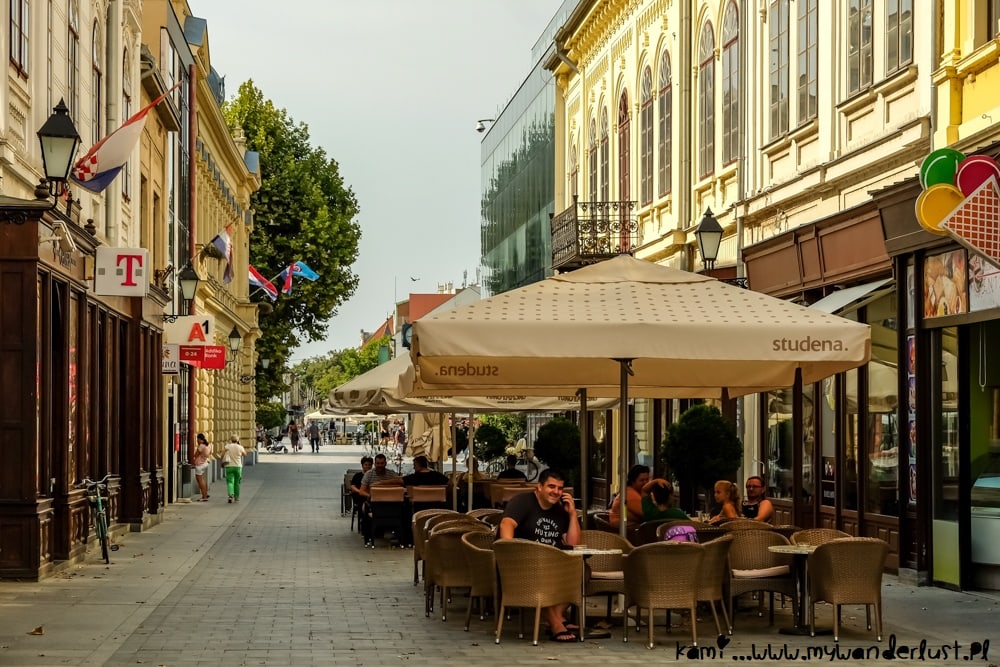
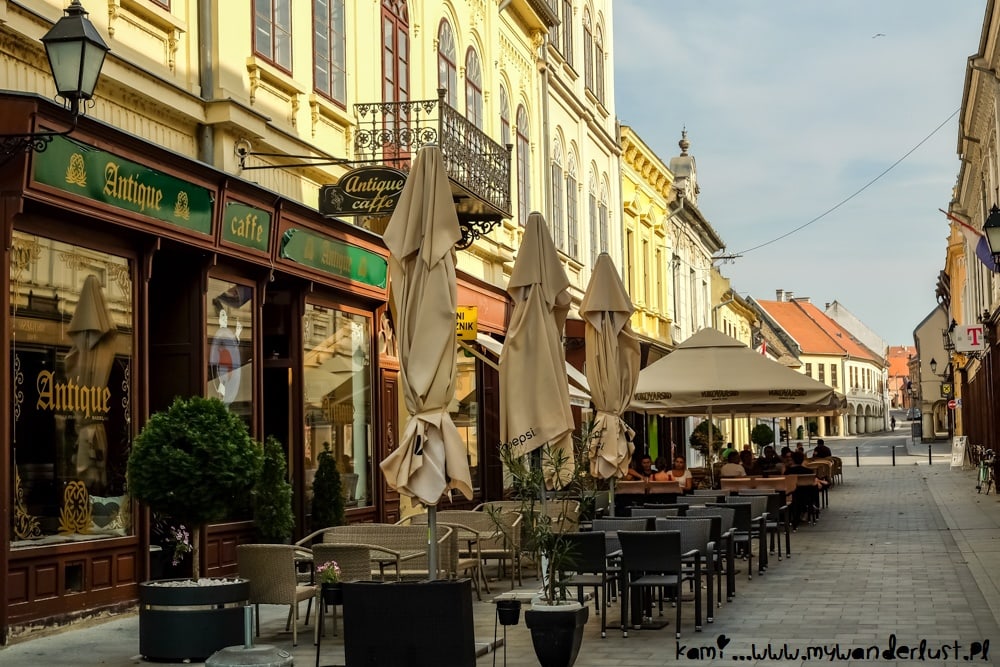

Many of the buildings remember Austria-Hungary times and were built in the style typical for the Habsburg Empire. The prettiest one is the former Grand Hotel from the very end of the 19th century. During my visit, there were old photos of Vukovar showed in the windows – it was interesting to see how the town used to look like in the past.
Some of the houses are even older, with charming Baroque arcades. I must admit I didn’t expect such a nice center!
While in the center don’t miss the Workers’ Hall (Grand Hotel), Syrmia County Palace, Old Water Tower, the Magistrate building, the church of Saint Nicholas, or St Roch’s Chapel.

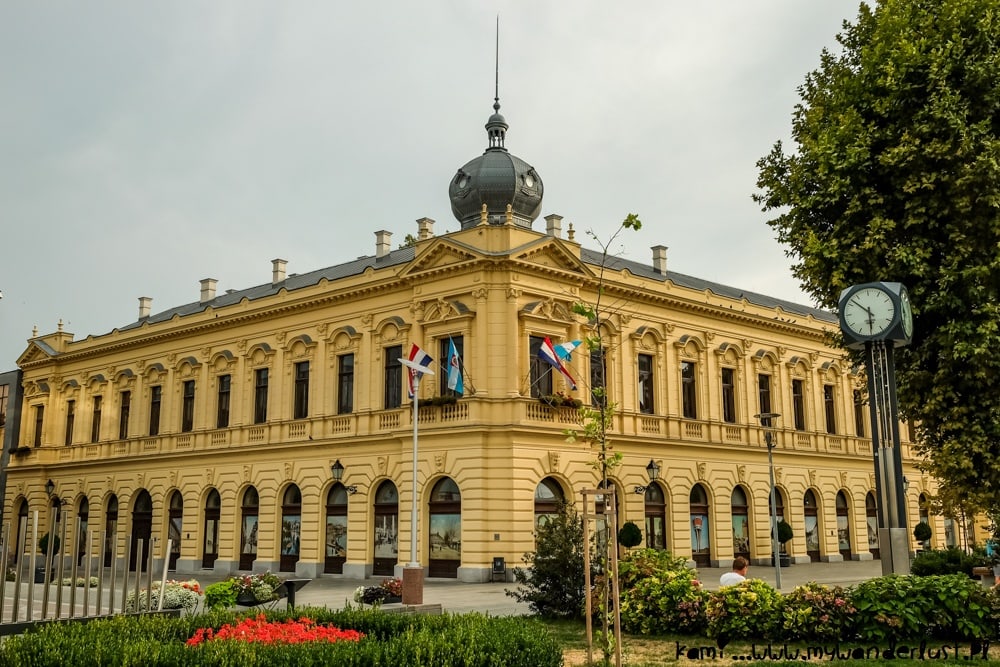
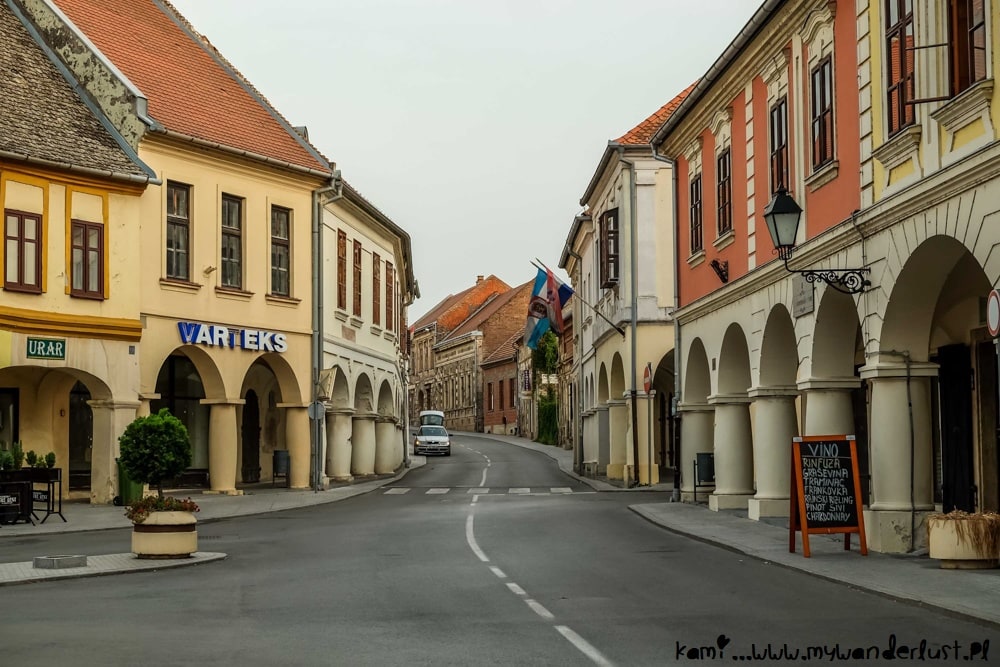
From the central part of the town you might also go for a boat ride on the Danube river – this can be a great way to see Vukovar from another perspective. The islands on the river across the city are a popular summer getaway for locals – you can take a boat to get there from the center of the city.
I also spent way too much time just sitting at the riverside and enjoying the calm and peaceful vibe of the place. It was easy to forget about the tragedy that took place in Vukovar. To add a bit more cheerful look to the city there are a few really nice murals, including the 3D painting on the bridge.


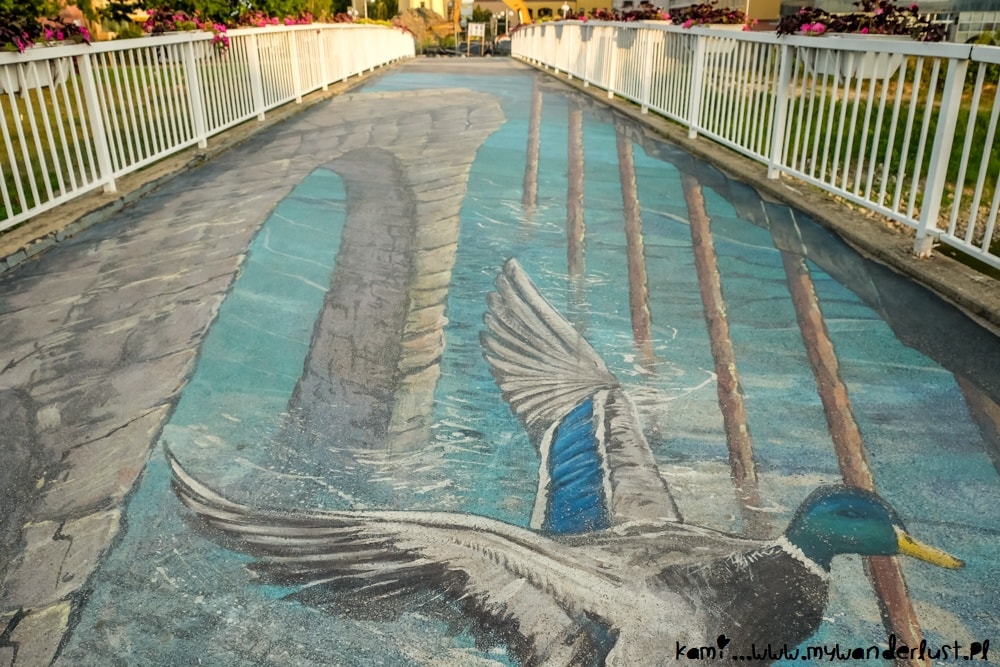
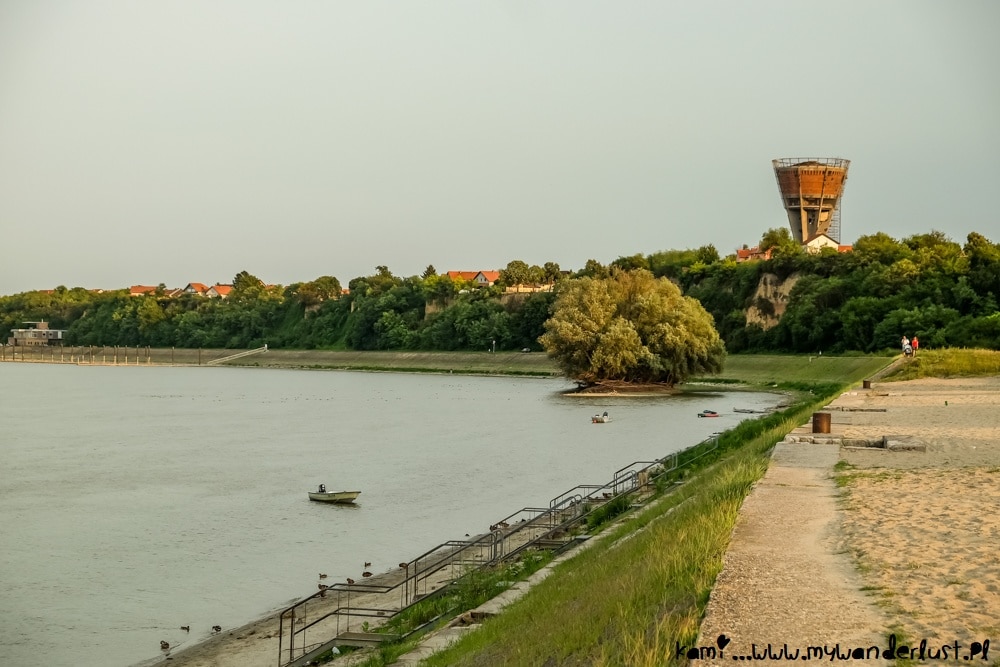
A short walk away from the center you can find the Franciscan monastery with St Philip and Jacob Church, towering above the city. The Franciscans have been present in the area for centuries and eventually, in the 18th century, they were allowed to build a church here.
Today, renovated after the war destruction, the Franciscan monastery is one of the most precious of Vukovar monuments and the third-largest church in Croatia (after Zagreb and Đakovo). Inside you might still see remnants of the war – bullet holes or the graffiti left by Serbs.
From the hill, you can see a nice panorama of the Danube river. There is also a memorial with 2,717 names of people who lost their lives during the Battle of Vukovar and siege. The contrast with the lines of names with the beautiful surrounding is really touching.


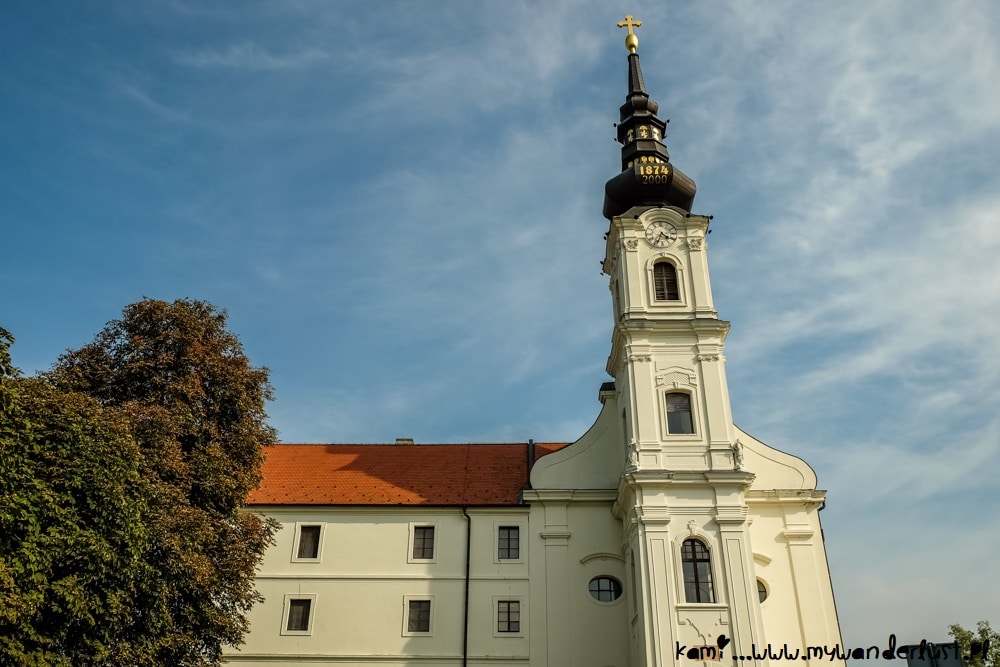
A bit further from the monastery is the symbol of the heroic battle – the destroyed water tower, riddled with mortar holes and a flag of Croatia waving proudly on top. The water tower was built in the 1960s and until the Croatian War of Independence, it was a popular place among locals, with the restaurant on top.
During the siege, this was one of the most targeted objects, hit over 600 times. Afterward, it was decided not to rebuild the tower, it is a protected monument and a sad reminder of the heroic and tragic battle.
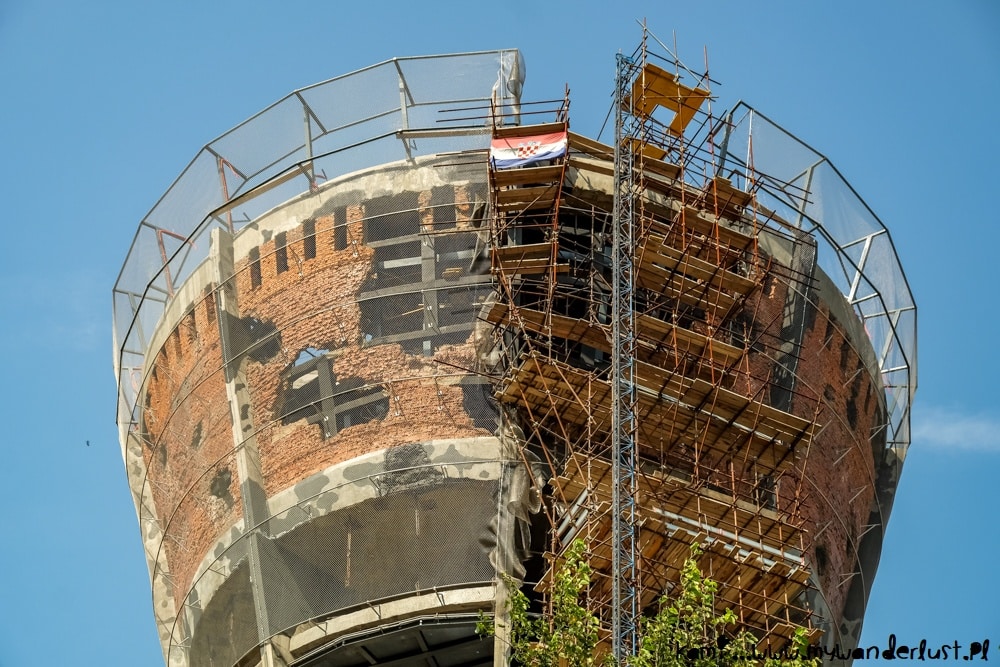


But there are more remnants of war in Vukovar. A bit away from the center (but within a walking distance) you can visit the Memorial Centre of Homeland War – the institution preserving the memory of the war. On the premises, you can see on display numerous military vehicles from the times of the war – airplanes, amphibian tanks, and more. There is even a simulated minefield.
You can also see two indoor exhibitions, about the Serbian concentration camps and about the Battle of Vukovar. Unfortunately, they were closed when I visited the Memorial Centre, but at least I could see some pictures from Vukovar in one of the Zagreb museums.

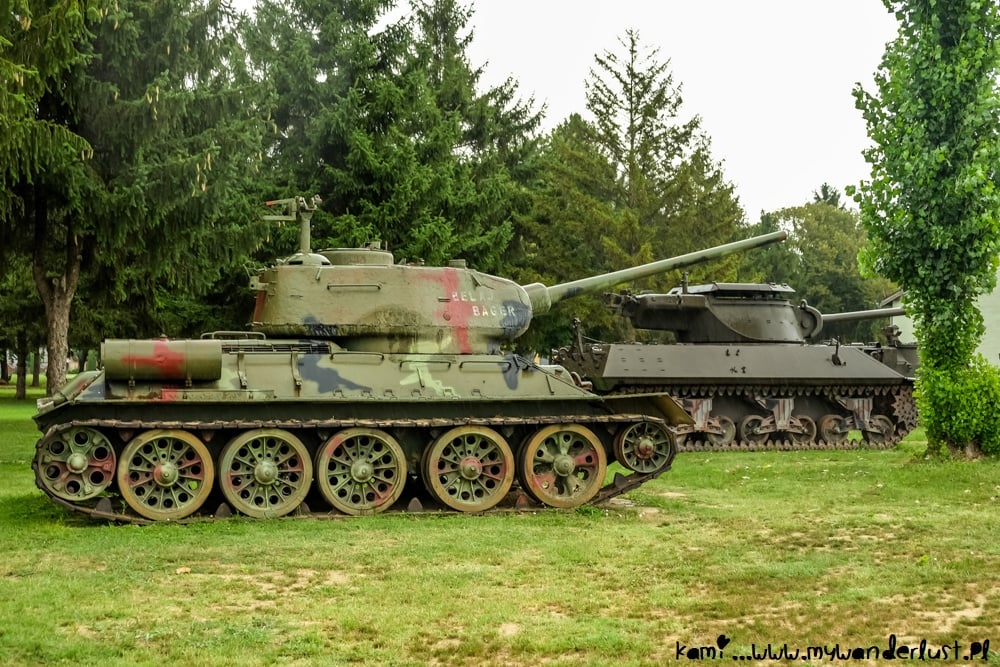
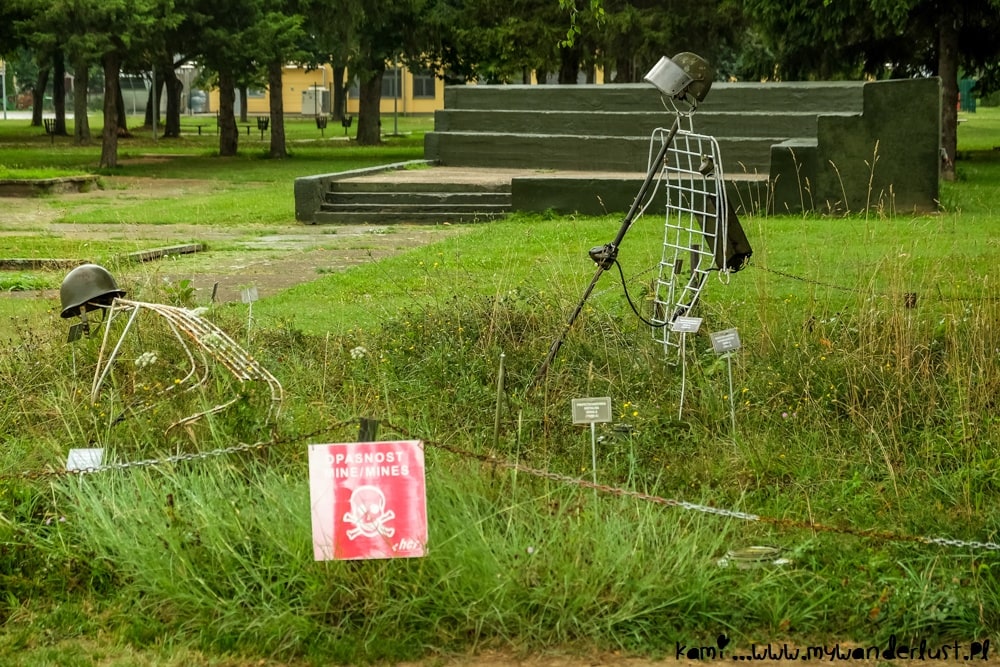
The most touching place is, however, the Vukovar hospital – home to the cruelest tragedy in the city. Today it is a regular, working hospital but in the basement there is the memorial space, located in the authentic room where people were hiding during the Battle of Vukovar. There is no information in English but since the place is very visual you can easily imagine what has happened here.
When you enter the basement corridor the first thing you see is the ceiling almost destroyed by the bomb – it is lit in the changing colors to keep your attention on it. The walls are covered in old pictures, names of those who died, and the calendar of the events from the war.
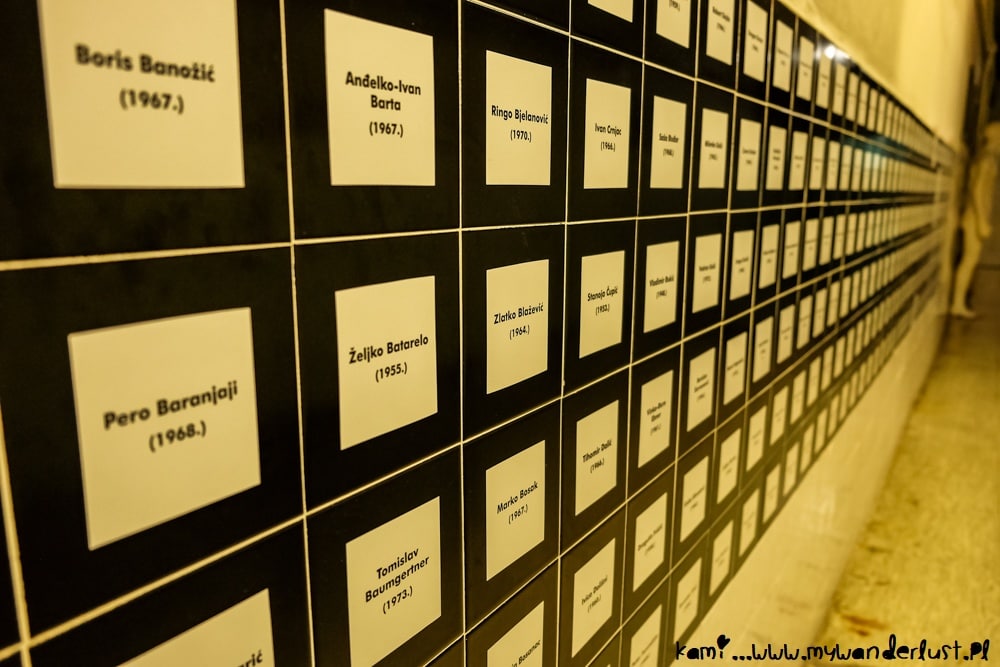

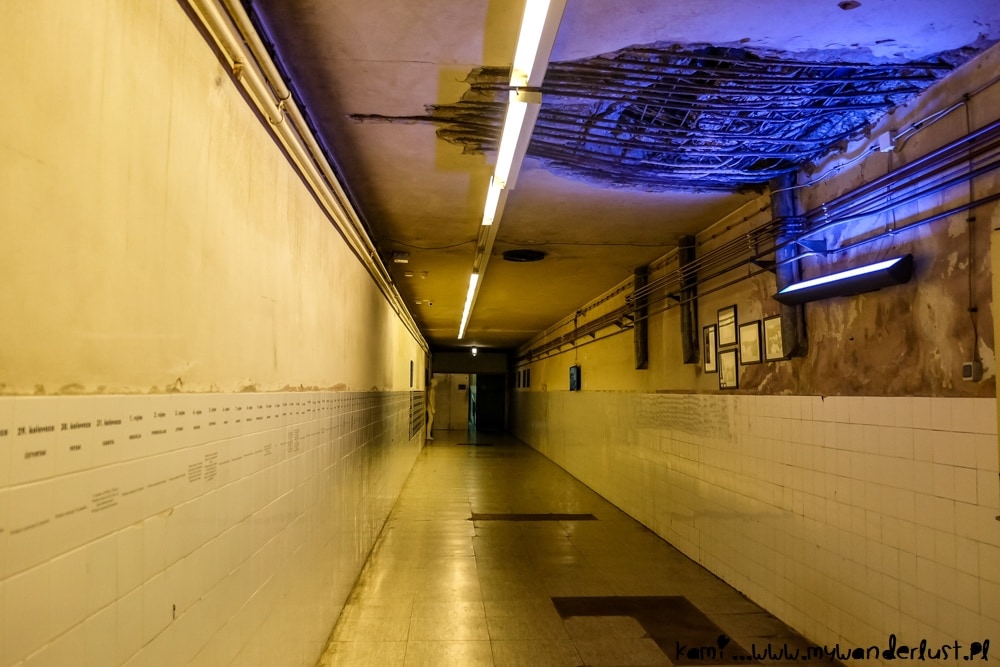
The basement rooms were adapted to what they used to look like during the war, including the kitchen, storeroom, and all the medical equipment. The realistic figures of patients and hospital employees really play with your imagination and take you back to those tragic days during the Battle of Vukovar.
In one of the rooms you can hear names of those who were taken from the hospital to be killed – this is probably the most touching part of the memorial. When I visited the Vukovar hospital I was alone in the basement and the images of the place were haunting me for a long time, they sometimes still do.
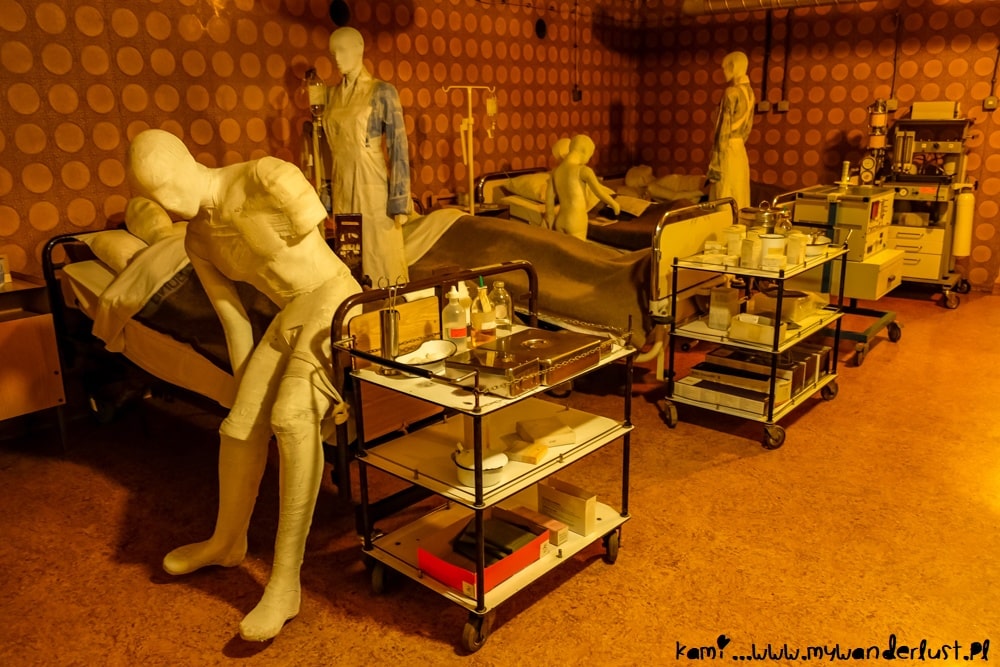
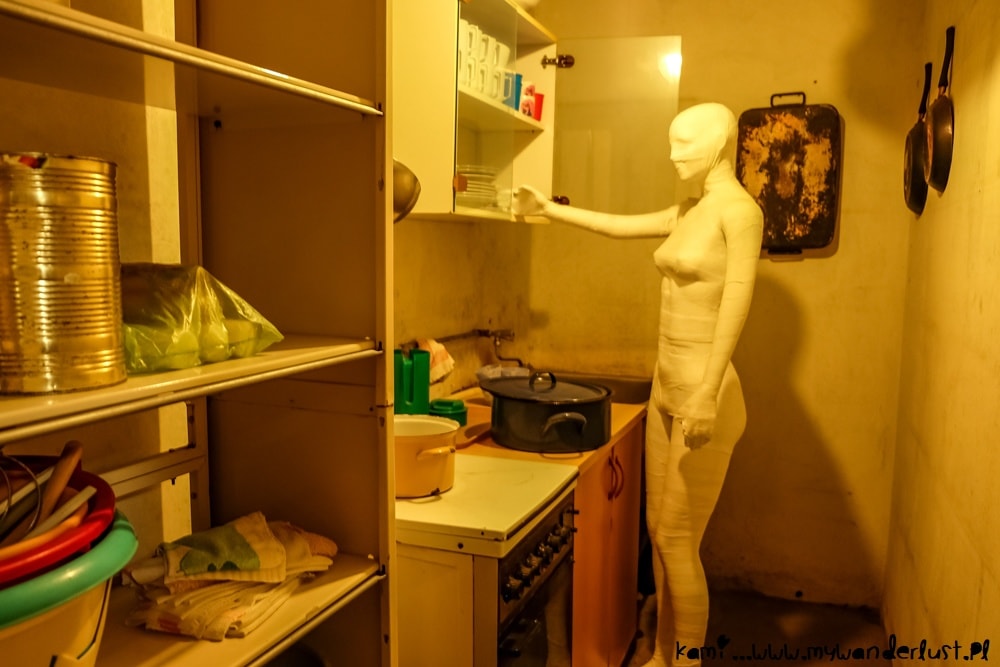
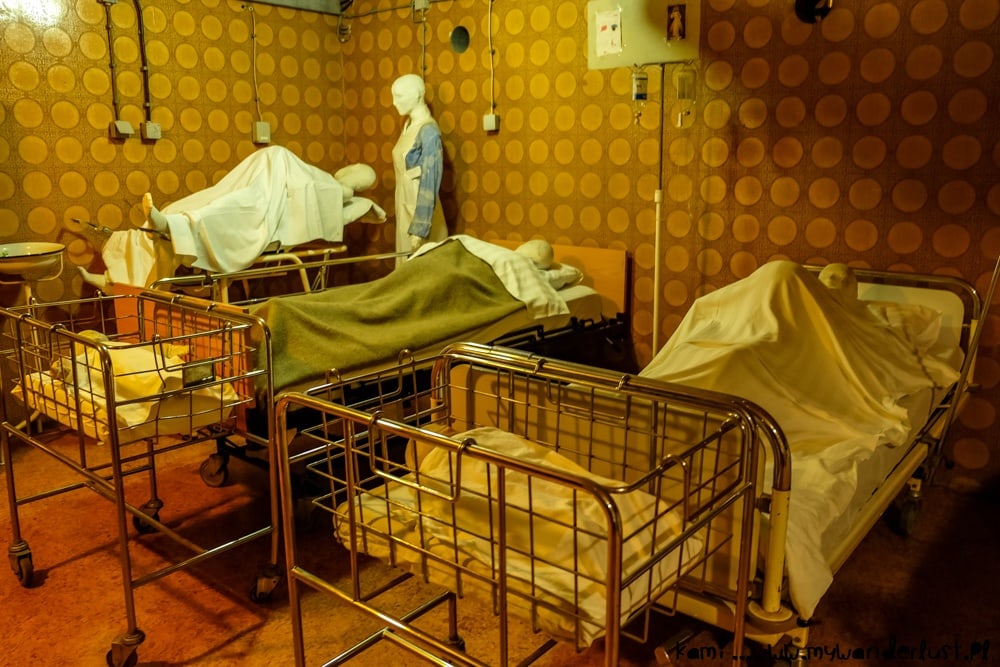
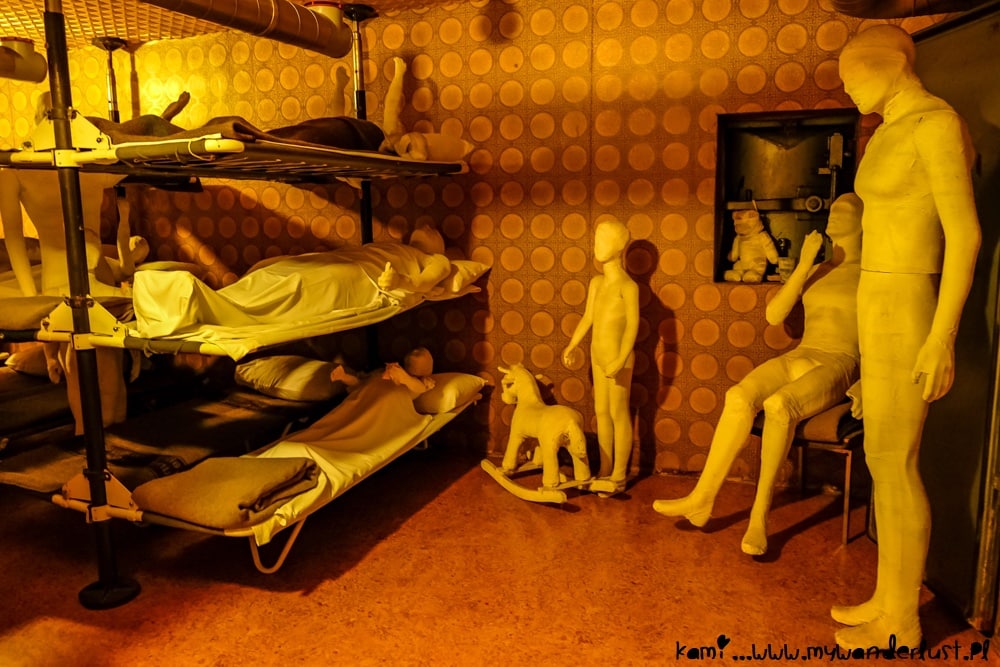
There is one more war memorial worth mentioning and visiting, not in Vukovar itself but a few kilometers outside of the city. Ovčara Memorial Center is located in the place where 261 people of non-Serbian nationality were killed on 20th November 1991 – they were all taken there from the Vukovar Hospital. The memorial center commemorates the victims of the massacre and is an important place to get a full understanding of what has happened in Vukovar.
Unfortunately, since I was relying on public transport during my visit and it was raining cats and dogs on the second day, before I left for Zagreb, I didn’t manage to visit Ovčara Memorial Center. But I’m ready to go back to Vukovar just to see this place.
Final thoughts on visiting Vukovar
Vukovar isn’t an easy place to visit. It might look nice and pretty and first but once you start noticing the war remnants and dig deeper into the history of the town you will realize what a haunting place this is. Life might be back to normal but the locals still live in the shadow of the tragic events of 1991. Still, I believe it’s important to see this kind of place, to learn more about history and to understand why it should never happen again.
If you are somewhere nearby be sure to stop in Vukovar too, I’m sure you will find it interesting even if a bit different than most popular places in the Balkans.

Further reading
I published many articles about Croatia that you might find useful when planning your trip there. Here are some of them:
- 33 Best Places to Visit in Croatia
- 25 Wonderful Things to Do in Zagreb, Croatia
- The Bay of Abandoned Hotels in Kupari, Croatia – the Urbex Heaven
- 23 Amazing Things to Do in Dubrovnik, Croatia
- How to visit Krka National Park in Croatia
- 11 Perfect Day Trips From Split, Croatia
- 17 Fantastic Things to Do in Hvar, Croatia
- Visiting the Abandoned Željava Air Base in Croatia
- 19 Best Things to Do in Rijeka, Croatia
- Visit Opatija, Croatia – the Charming Seaside Town
- and many more!
If you are looking for articles about a specific destination – check out the map with all the articles I’ve published (and their locations). You can also join my Facebook group about traveling in the Balkans and ask your questions there.
Travel Resources
You can find the best accommodation options at Booking. They have many discounts and excellent customer service. Click here to look for the place to stay in Vukovar
Never travel without travel insurance, you never know what might happen and better safe than sorry. You can check the insurance policy for Croatia here.
I recommend joining organized tours to get to know the place better and to visit more places during your trip. You can find a great selection of tours at Get Your Guide – click here.
Make sure to have the offline map always installed on your phone, they can save you so many troubles. I always use the free app Maps.Me.
For the end I left a few announcements that might interest you:
- Sign up to my newsletter or follow me on Bloglovin to get updates about the new posts
- Join my Facebook group about Eastern Europe, the Balkans and former USSR and connect with fellow travellers and enthusiasts of these regions – just click here!
- I’ve included a few handy links of services and products I personally like and use so you can plan your own trip to Croatia too. They are often affiliate links. This means I will get a small commission if you book/purchase anything through my links, at no extra costs for you. Thank you!
LIKED IT? PIN THIS POST FOR LATER!


If you enjoyed that post why don't you share it with your friends? That would mean so much to me! Also be sure to join 30.000+ fellow travelers and follow me on Facebook, Twitter, or Instagram for travel updates and even more pictures! If you don't want to miss new posts sign up to my newsletter or follow on Bloglovin!


2 Comments
Valentin
24/12/2020 at 10:52I have been in Vukovar multiple times since it is 40 km from my home. And, yes, it is beautifull now. I haven’t been there in pre-war times so I don’t know how it looked like. I remember when I went there first time, as a student with a student group. It was in 1998 year. It looked terrible, burned houses, destroyed buildings. Now lots of city has been rebuilt. But you can still see some destroyed houses and bulet holes in walls of buildings.
What you haven’t said in this post, there are few other interesting sights in Vukovar. On the road from Osijek to Vukovar, in suburbs called Trpinjska road, there is memorial place with a tenk in front of. On the way to Ovčara, there is actualy Vukovar memorial cemetery. And Ovčara is a 2 place memorial. First is a building where the prisoners where kept for 2 days. Second is place where they were killed and buried. Very sad place.
Adica is a place for relaxing and walking in the park.
In summer you can also go with a boat to island and swimm in Danube river.
Water tower is now restored and serves as a museum. Entrance fee is 55 Kn if you go upstairs or 65 Kn with an elevator. I went there a week ago – it is beautifull.
If you are in Vukovar few days, you can go to Ilok and Vinkovci. But Osijek deserves more than a day.
kami
07/01/2021 at 22:17Unfortunately, since I travel by public transport my options for visiting places outside of the town were almost non-existent and I focused on Vukovar only. But thank you for filling the gaps. Hopefully, it will be useful for someone who plans to visit the place.
When I visited Vukovar the water tower was under renovation. But I would love to go back there to visit it inside. Thanks for letting me know about it!